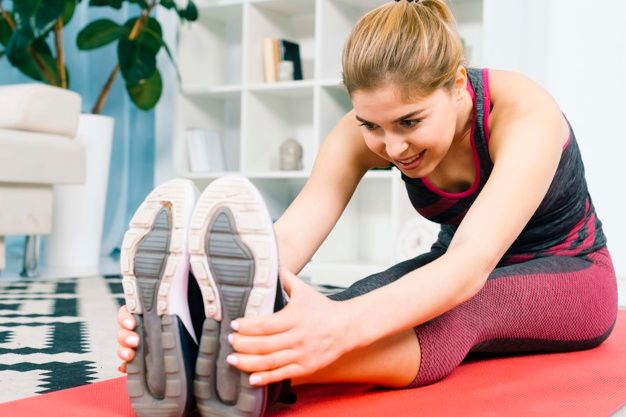To be fit and healthy, exercising regularly is of utmost importance and has to be accompanied by a good diet and proper sleep. While some experts suggest following the traditional notions associated with working out, some of them focus on newer and more effective methods. There are certain aspects about exercising that have been with us for generations but it turns out that not all of them are true. In this article, we’ll be talking about certain myths about exercise that are very common and need to be ignored for good.
If you’re into regular workouts, there are chances you may have heard about or followed at least one of these workout myths. These are misleading and even if some of them have a positive short-term impact, they are not good for the long run. In some cases, the results remain the same, with or without their application. If you want to know about these myths about exercise, read along to find out!
5 Biggest exercise Myths About Exercise
Here are the some biggest exercise myths about exercise that you might not know about them:
Exercising in an empty stomach
Many of us have heard that it is a good idea to exercise on an empty stomach since by doing that, the body fats are lost at a faster rate. This method might seem to work for a few days but the results are not visible in the long run. It is very important to maintain a balanced diet and have a healthy breakfast before you hit the gym or go for a run. Research shows that having a healthy breakfast before working out aids the reduction of body fats way more than exercising on an empty stomach.
Have you been following this myth for a long time now? Have you noticed your progress to slow down or become stagnant despite being regular with your workouts? This is your cue to make a few lifestyle changes to avoid workout myths like this one.

Also, read: 6 Best Smart Home Gym Equipment For When You Cannot Visit The Gym
Static stretching before exercise
We have known since time immemorial that workouts should not begin without you stretching your muscles out. However, according to experts, this is not a good way to start your exercising process. The muscles loosen up before you even do the main workout, which in turn, reduces the efficiency of the workout. Thus, it is advised to begin with some warming up of the muscles by doing some dynamic stretches instead of the static ones that are usually recommended. The dynamic stretches would contribute to proper movement and make your workouts easier and smoother. The best time to attempt the static stretches is at the end of the workout session when your muscles need some cooling down.

You need to know the reasons behind every technique to make the most of your workouts instead of obeying age-old myths about exercises blindly.
Walking with weights
Being able to walk with heavier weights has been a big flex for fitness enthusiasts. However, experts have gone ahead to confirm that it’s one of the biggest exercise myths that we’re familiar with. Walking with weights can increase the chances of injuries manifold since the pressure points are the joints of the body.
Thus, a better alternative is to walk with poles that focus on the upper body and the abdominal muscles. They don’t pose a risk of injuries or painful muscle cramps since they take away all the pressure of the joints like the hips, the knees, and the lower back of the body. So, the next time you’re asked to try walking while carrying weights, try your hand at the poles instead to develop proper posture and strength.
Drinking water even when you are not thirsty
We have heard that one should constantly keep hydrating yourself while you’re working out to avoid dehydration, sickness due to heat, or muscle soreness and cramps. However, this is incorrect and is one of the most common myths about exercise.

Your workout won’t be hampered if you do not drink water frequently. Instead, if you drink water only when you’re thirsty and feel the need of having it, your performance would be way better than it would be with continual hydration.
Experts say that drinking too much water that cannot be used up during exercise can lead to the reduction of sodium in our bodies. Water intoxication or hyponatremia is a condition caused as a result and can turn out to have a detrimental effect on your health. To keep your sodium levels in check, reach out for your water bottle only when you need to.
Eating after working out
Seems like we have been wrongly asked to eat a heavy meal after working out, by our elders, whenever we come back after our daily exercising sessions. Athletes and professionals who’re supposed to have consecutive workout or training sessions are usually advised to have foods like chocolate milk in between, that have a certain amount of calories.

However, for people who work out for a specific period every day, to stay fit, it’s not necessary to eat just after working out. If you’ve been gaining weight instead of losing it despite being regular with your workouts, you’ve surely been consuming calories right after finishing your exercises. You’re supposed to eat before beginning your workout to avoid hunger pangs, followed by binge eating post-workout.
Conclusion
It’s important to listen to your fitness trainers when you’re following a fitness regime but at the same time, you should also do your research and be aware of what you’re doing. All the myths about exercise that we have mentioned above are very common and you might be following them unconsciously, without realizing their ill effects.
You should be very clear about everything that your body goes through, right from the time you begin working out, till the time you are about to do it again, the following day. Moreover, keep a check on your monthly progress to determine whether you’re following the right techniques or not. If you’re doing everything right but the desired results are not observed, you should talk to experts and your physician for advice.
Also, read: Are You Suffering From Leg Cramps| Learn 4 Ways To Stop Leg Cramps Immediately

